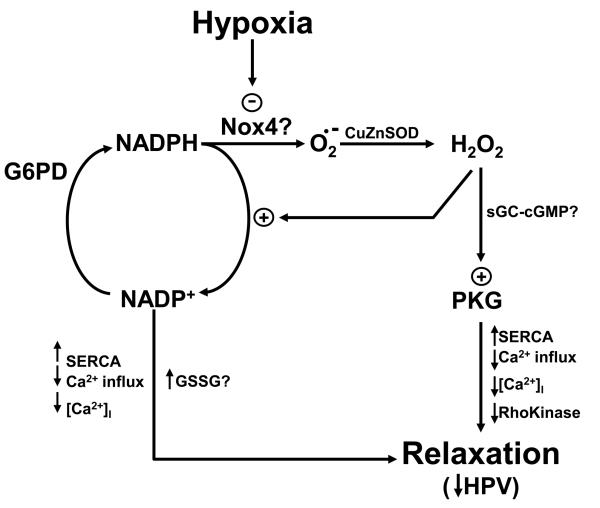Fig. 1.
Model showing how hypoxia is hypothesized to elicit a hypoxic pulmonary vasoconstriction (HPV) response seen in bovine pulmonary arteries by removal of a relaxation by hydrogen peroxide which appears to be derived from Nox4 oxidase. The model shows how hypoxia decreases the generation of superoxide (O2.−) by Nox4 oxidase needed for conversion to hydrogen peroxide by Cu,Zn-SOD and mechanisms through which peroxide can maintain a relaxation under normoxic conditions potentially mediated through stimulation of cGMP-dependent protein kinase (PKG) activity. In addition, by hypoxia decreasing cytosolic NADPH consumption for the generation and metabolism of peroxide, it may also reverse relaxing mechanisms controlled by cytosolic NADPH oxidation and oxidized glutathione (GSSG) formation. In this model, the relaxing mechanisms removed by hypoxia may involve decreasing intracellular calcium [Ca2+]I (e.g. through increased uptake by the SERCA pump and decreased Ca2+ influx) and suppressing the action of Ca2+ on the contractile apparatus through inhibiting Rho kinase activity.

